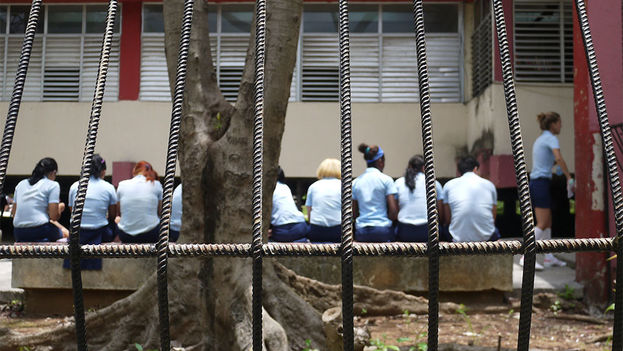
![]() 14ymedio, Havana, 23 May 2017 — Images of students who smoke during recess or between breaks in class, and teachers who light up their cigarettes in the classroom are common in Cuban schools. In spite of the frequent anti-tobacco campaigns promoted by the media, in recent years Cubans have begun smoking at ever earlier ages.
14ymedio, Havana, 23 May 2017 — Images of students who smoke during recess or between breaks in class, and teachers who light up their cigarettes in the classroom are common in Cuban schools. In spite of the frequent anti-tobacco campaigns promoted by the media, in recent years Cubans have begun smoking at ever earlier ages.
The head of the Independent Department of School Health in the Ministry of Education, Yanira Gómez Delgado, expressed to the newspaper Juventud Rebelde her concern about exposure to tobacco smoke in schools and noted that the regulation requires that “no person who works in schools can smoke there.”
“It is not enough to avoid students suffering the effects of being passive smokers, but it is also necessary to promote anti-smoking with the example of their own behavior, and to distance themselves from a gateway drug, which cigarettes are considered to be,” warns Gómez Delgado.
The country does not yet have a tobacco prevention and control law that more strictly penalizes those who smoke in social spaces, and although in 2005 the authorities banned smoking in closed public places, the measure is barely complied with.
The country does not yet have a tobacco prevention and control law that more strictly penalizes those who smoke in social spaces
More than half of Cuban families are exposed to environmental tobacco smoke: 55% of children, 51% of pregnant women and 60% of adolescents, said Dr. Elba Lorenzo, head of the National Tobacco Program. The specialist believes that the island is one of the countries with the “greatest prevalence of the problem” worldwide.
Lorenzo is committed to “creating smoke-free spaces in society” as “the only effective and recognized means of protecting children, adolescents and young people” from the harmful effects of smoking.
In mid-2015, the Ministry of Public Health reported that 36 people on the island die of tobacco-related illnesses every day. Dr. Patricia Varona, of the Society of Hygiene and Epidemiology of Cuba, told the official press that smoking is the non-genetic disease that most affects Cubans’ life expectancy.
Cuba occupies fourth place among Latin America countries in the prevalence of smokers, behind only Chile, Bolivia and Uruguay. There are 2,198,133 smokers on the island, including 1,431,441 men and 766,691 women, representing 23% of the population. Some 10% of them smoke more than 20 cigarettes a day.
